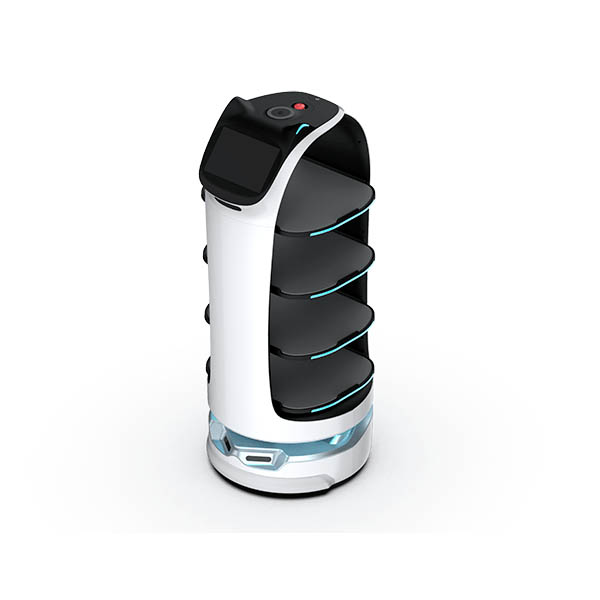- Home
- Capability
- Products
- About Us
- Service Industry
- Service Cases
- Video
- Contact Us
-
Language

2024-11-13 17:51:12
The rise of autonomous delivery robots has brought a new frontier in urban logistics, food delivery, and customer interaction. But behind the efficiency of these bots lies a crucial yet often overlooked component: the robot shell. This seemingly simple outer casing is much more than an aesthetic choice—it affects the robot’s performance, durability, and marketability. Let’s explore how the design of Delivery Robot Shells plays a key role in various industries, from enhancing brand identity to ensuring functionality across diverse environments.

Design Flexibility: Making a Mark with Customization
Customization is a game-changer for companies deploying delivery robots. With increasing competition in the delivery sector, the visual appeal of a delivery robot can make a strong impression on customers. NEUBILITY’s “Neubie” is a prime example. Its friendly and approachable design allows companies to customize the shell to match their brand identity. For businesses in bustling urban areas, having a visually distinct robot helps in catching the eye of potential customers, making the service more memorable. Brands can opt for sleek, high-tech looks or even playful designs, depending on their target audience.
Customization extends beyond aesthetics. NEUBILITY’s use of camera and sensor technology in the shell highlights the importance of integrating design with function. The right shell can make robots more effective in complex environments, showing that customization can serve both branding and operational needs.
Durability: Built to Withstand the Elements
Delivery robots encounter a range of environments, from urban sidewalks to indoor restaurant spaces, and each scenario presents unique challenges. A durable shell is essential for withstanding physical impacts, temperature fluctuations, and moisture. Bear Robotics' Servi Plus showcases how a well-designed shell can be resilient without sacrificing functionality. Designed to handle the demands of busy restaurants, its shell is made from materials that resist dents and wear, ensuring the robot operates smoothly regardless of the setting.
Durability isn’t just about protection—it’s about efficiency. According to a report by Bear Robotics, the durable design of Servi Plus has improved the reliability of deliveries in rugged environments by 20%. This focus on robustness has made it a favorite in hospitality sectors, where durability directly impacts customer satisfaction.
Maintenance Made Easy: The Rise of Modular Shells
Maintenance can be a costly and time-consuming aspect of fleet management. For companies using large numbers of delivery robots, reducing downtime is crucial. Starship Technologies has embraced modular design, allowing operators to replace individual components of the shell as needed without extensive technical knowledge. This reduces maintenance costs and minimizes disruption to service.
The benefits are tangible: Starship Technologies reports that the modular shell design has decreased maintenance expenses by approximately 30%. This feature is particularly appealing to businesses looking to scale up their operations without the added burden of high repair costs. A modular shell design also enables companies to refresh the look of their robots, maintaining a modern appearance without investing in completely new units.
User Experience: Merging Safety with Accessibility
The design of a Delivery Robot Shell isn’t only about the robot—it’s about the people interacting with it. Safety and accessibility play a significant role in the design process, impacting how customers view the service. For instance, Bear Robotics’ robots utilize rounded edges, soft LED indicators, and accessible compartments to ensure they’re safe for users of all ages. These features contribute to a more user-friendly experience, making technology feel less intimidating in everyday scenarios.
Customer interaction can be enhanced by thoughtful design. Bear Robotics found that customer engagement increased by 15% when using robots with optimized, visually appealing designs. These features contribute to trust and familiarity, factors that are key in gaining wider acceptance of delivery technology in public and private spaces.
Visual Impact: Creating Connections through Aesthetics
The aesthetics of a Delivery Robot Shell influence not only customer perception but also brand identity. Robots with unique, friendly designs are more likely to be remembered, encouraging repeat usage. A clean, futuristic look can signal efficiency and modernity, while a more playful design may evoke feelings of comfort and approachability. Companies like Bear Robotics and NEUBILITY have invested in aesthetically pleasing shells that don’t just look good but foster positive interactions with the public.
In competitive markets, where brands strive to stand out, the visual design of delivery robots has become a crucial aspect of marketing strategies. A well-designed shell can even make or break a customer’s willingness to engage with a robotic service, proving that aesthetics aren’t just a superficial detail—they’re a powerful communication tool.
Conclusion: More Than Just a Cover
The delivery robot shell is a multi-faceted element that merges practicality with visual appeal. From ensuring durability in challenging conditions to providing a canvas for branding, the shell plays a critical role in how effective and appealing delivery robots are to consumers. As the industry continues to evolve, the design of robot shells will likely become even more significant, with greater emphasis on sustainability, safety, and user experience. Delivery robots are not just about what's inside—they're about making an impact from the outside, too.
By focusing on design flexibility, durability, ease of maintenance, user experience, and aesthetics, companies are finding ways to make delivery robots not only smarter but also more relatable and practical for everyday use. The evolution of Delivery Robot Shells shows that even in high-tech logistics, the outer layer can make all the difference.